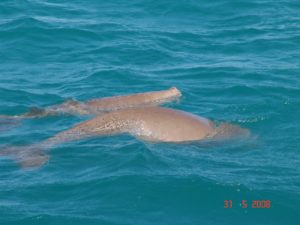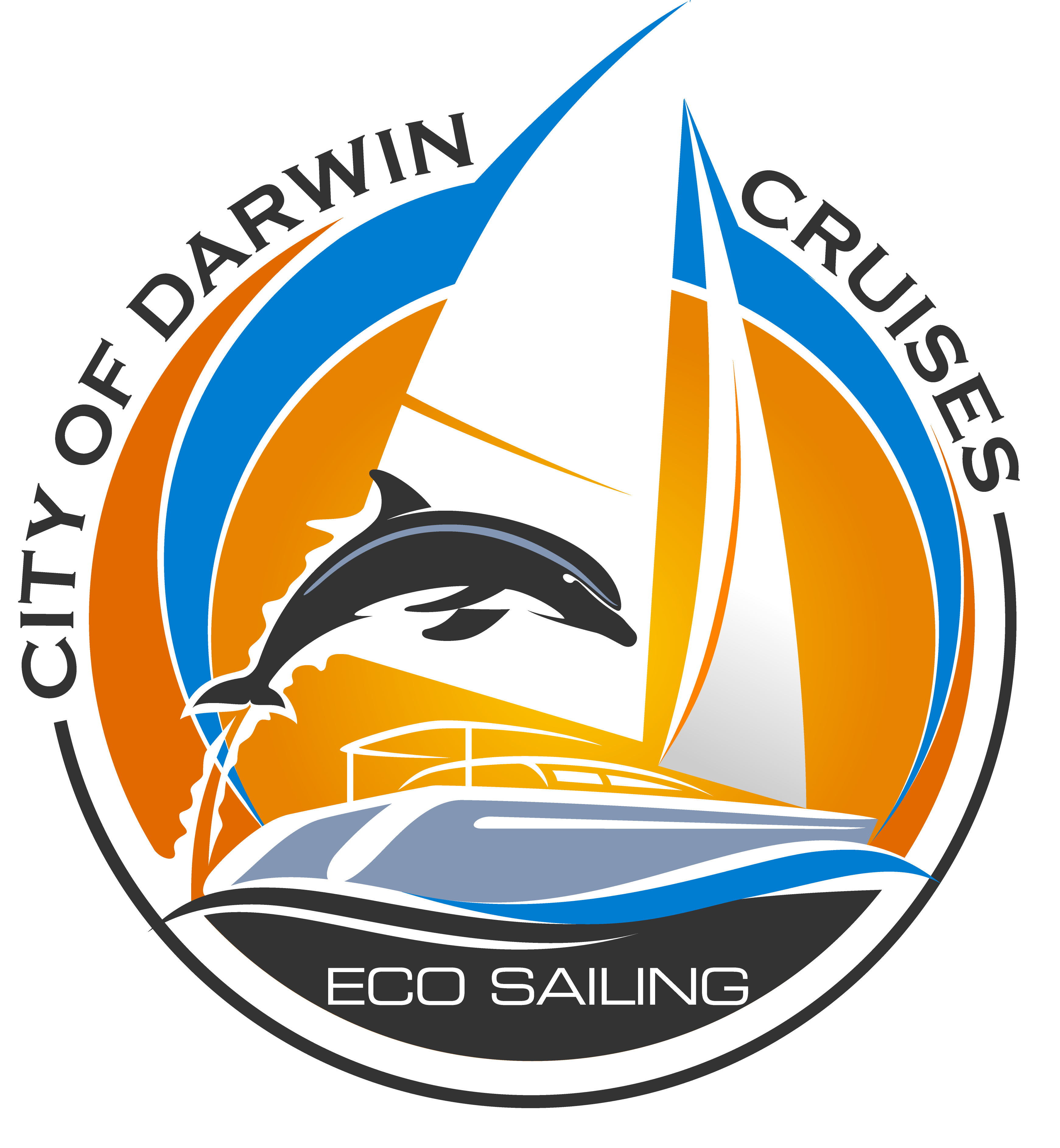Dugong in Fannie Bay
Dugong in Fannie Bay
The Australian Government Environment web site describes the species profile and threats for dugong around Australia.
As sailing Tourism Operators for the past 15 years it has always been an absolute pleasure to observe dugongs feeding in Fannie Bay. Dugongs are medium-sized marine mammal. It is one of four living species of the order Sirenia, which also includes three species of manatees. When they are fully grown, they may be three metres long and weigh 400 kilograms. Dugongs swim by moving their broad whale-like tail in an up and down motion, and by use of their two flippers.

Fannie Bay dugong mother and calf
Poor eyesight means the dugong is reliant on sensitive bristles along its pig-like snout to locate the grasses on which it dines, and it can dive for up to 10 minutes at a time while grazing. Although generally travelling at a leisurely rate of 10 kilometres per hour, the dugong can accelerate to 22 kilometres per hour in short bursts. Source (http://www.wwf.org.au/what-we-do/species/dugong#gs.i97fEhs)
For many years we anchored our vessels out the front of Cullen Bay Marina (link), and if we were quiet and didn’t make too much noise the dugong would stay around the vessel, happily feeding on the stumpy seagrass.
One morning with an overnight charter, we woke to the sound of quiet splashes and snorting, there next to our sailing cat was a family of a mothers and calf dugong, our clients from Singapore were absolutely amazed that they hung around for 30 minutes or more.
Spotting a dugong was once a regular occurrence in Fannie Bay, sadly we don’t see as many as we used to. Where have they all gone? Perhaps the traffic on the harbour has increased to a point where the dugong feel threatened, or the seagrass has been impacted on through increased vessel traffic at low tides, creating too much sediment for the seagrasses to grow.
We humans can all do our bit though, through minimising waste into the harbour, being careful on low tides when boating (to keep sedimentation to a minimum) and maintaining a low speed close to the shore in case dugong happen to be feeding(Especially early morning and late afternoon).
Our sunset cruises offers an opportunity to see these rare mammals.



No Comments